Ephemeral is the New Eternal
In the 21st century of urgent ideas and dystopic realities, architecture seems to have moved from an object carefully constructed to a deliberate denial of its physicality, where geometry stretches in elastic ways and conforms to no literal rectilinear dimension
Gautam Bhatia
I have always presumed architecture to be a closed system, a story that begins and has a middle and an end. In every project, the process proceeds to ensure closure of the kind that builds walls, creates boundaries and can be clearly stated in square feet. Geometry’s most primary forms give recognisable definition to architecture. The idea that that the building’s shape is no longer a significant measure of architecture is then perhaps a 21st century sentiment. The architecture firm of Diller Scofido + Renfro has now deliberately unstructured space into an undefined mass in their Blur Building project – a formless structure without space requirement or function. Their new faceless building has quite literally travelled the distance from the self-conscious Renaissance of proportion and subtle elemental variations, to a formlessness that is now complete – an architecture of fog and smudge that refuses to be placed on a drawing board, nor captured in photographs. When asked about the idea behind their obtuse conception, Charles Renfro, one of its creators, remarked, ‘Its public dimension encompasses other measures – the state of the digital world, of altered states, love, the self and the universe’. What more was there to say?
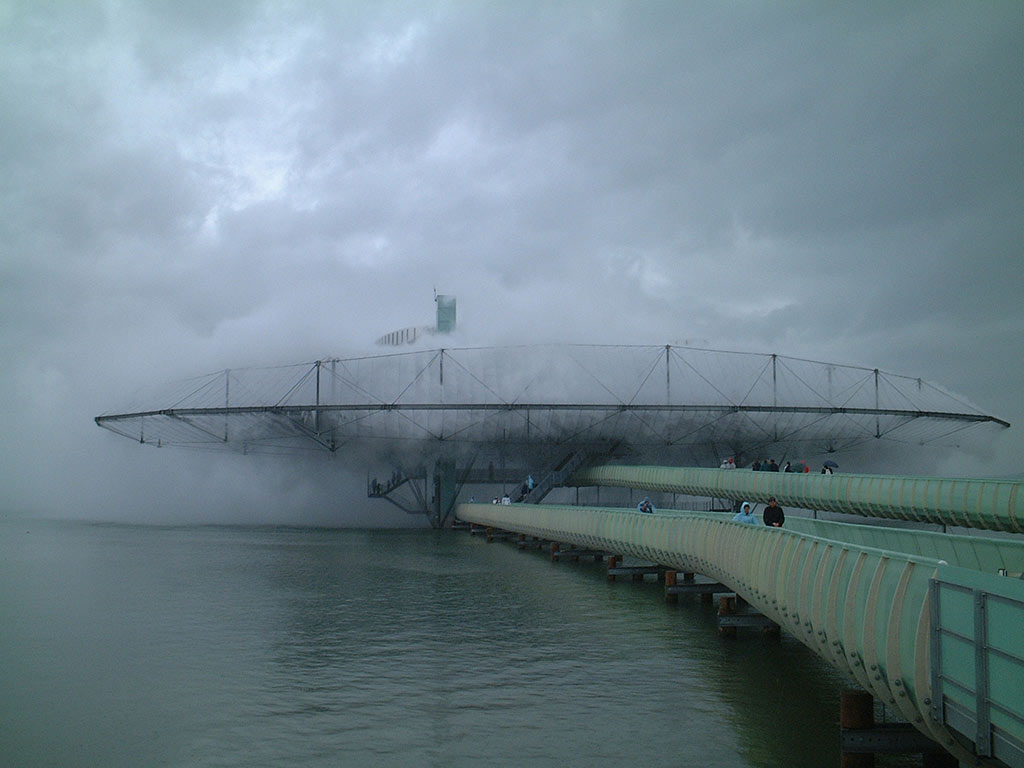
Distension, decay and disintegration were then built into the premise of future practices. It was easy to build large structures, but harder to hide their physical presence in a liquid pixilation that was as much eyewash as mechanical deception. Architect Louis Kahn had chosen to first practice a deviation from the physical order of building into work that was bordering the celestial and the transcendental. It was not enough that the Salk Laboratories in California were just physical things – fine work spaces in which scientists and researchers worked in magnanimous surroundings. No, the conscious focus of science in the lab was rewarded with Isamu Noguchi’s stark metaphysical condition in the landscape – a thin strip of water that connected land, ocean and sky. An artistic vision somewhere between the built world and emptiness.
Noguchi’s sculptural idea there complimented Kahn’s architecture only because both had learnt to test the physical world – as much through construction as through its absence. Noguchi physically chiselled away at matter; Kahn’s solids were conversely formed out of voids. The two worked in geometry so primary – cubes, cylinders and cones – that the form was not a choice to be made, but was beyond description. Its physical un-noticeability was its greatest asset – a step in the right metaphysical direction. In the Roosevelt Memorial in New York, Kahn’s ‘room’ – a reminder of Franklin Roosevelt’s Four Truths of Freedom – had a missing fourth wall towards the East River. The memorial was an imagined enclosure, where the river and the distant ocean were also included in the architecture.
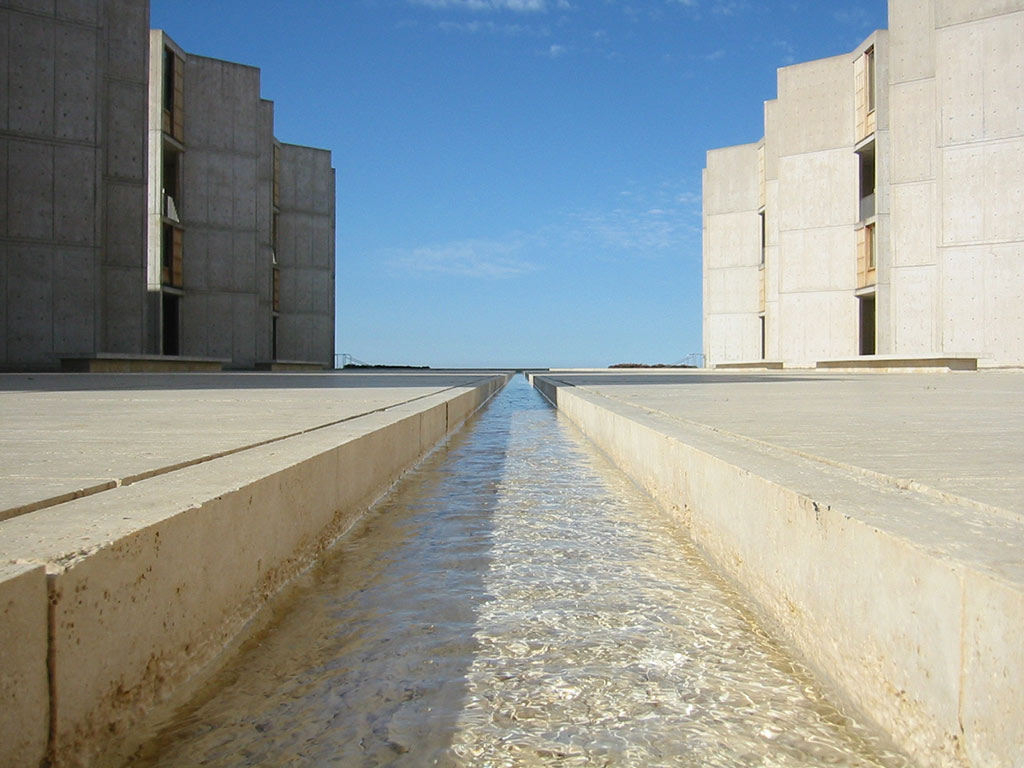
If in the search for architectural integrity, architecture had to paradoxically disintegrate the message was interpreted in wildly disparate ways. When I saw Frank Gehry’s Bilbao Museum, it informed in no uncertain terms about the destructive attributes of the new architecture. It was not so much the shock of the building’s silvery presence in a place of such magnificent history, but the continual prismatic distension of its various planes. Gehry, I imagine, had chosen its display to deliberately antagonise the traditions of the surrounding city. The building defied all conventions of architectural design: there was no front or back, no elevations, no prescribed entrance, no service bay, no distinction between wall and floor, floor and cladding. No difference between window and wall, transparent and opaque, no visible division into floors, no prescribed height, or building crown. Yet, the constructed pathway through galleries was an ambulatory of such delight and surprise, the building lost nothing of its power to condense and illuminate the artistic experience. The galleries were absorptions of such enormous variables of light and space that the art had become irrelevant. I stood in the waterfront and watched in the evening light as the architecture’s vivid sheen turned into a burnished brown, but never quite lost its sculpted shapelessness, even at night. The clarity of perception has suddenly altered into a multi-polar view – to a geometry that stretches in elastic ways, and conforms to no literal rectilinear dimension.
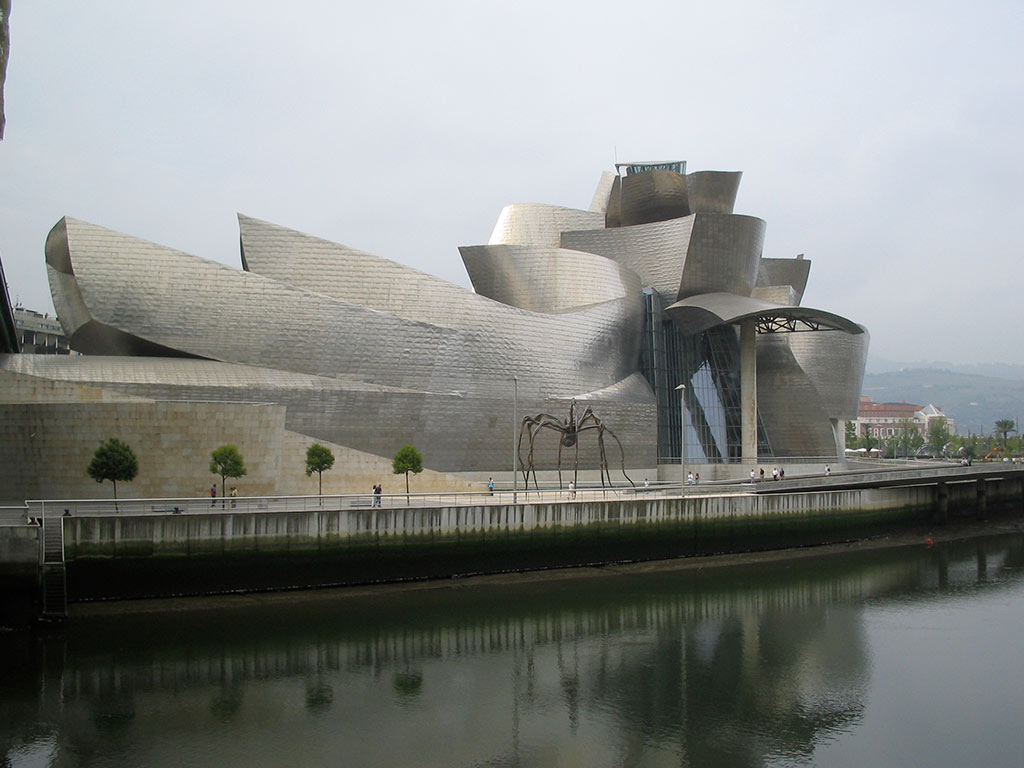
Herzog and de Meuron’s Olympic Stadium in Beijing confronts the viewer with structure and shape that emerges from the strains and stresses of an elaborate basket weave – an inventiveness that relies on computer-generated structural programs; the plasticity of form is then both a devise to invent as well as to camouflage. So too with Jean Nouvel. His New York apartment structure in Chelsea takes the external presence of building as an opportunity for serious play. Even when the internal layout follows the rigid pattern of required space, the window and wall confound the viewer with synaptic variations, so deliberately subtle that the building is seen as a visual trick. Window frames pivot and slant in minor angular variations, setting up the glint and sparkle of a fresh cut diamond – an idea developed first at the Arab World Institute, where the window was a camera aperture opening and closing with the outside light.
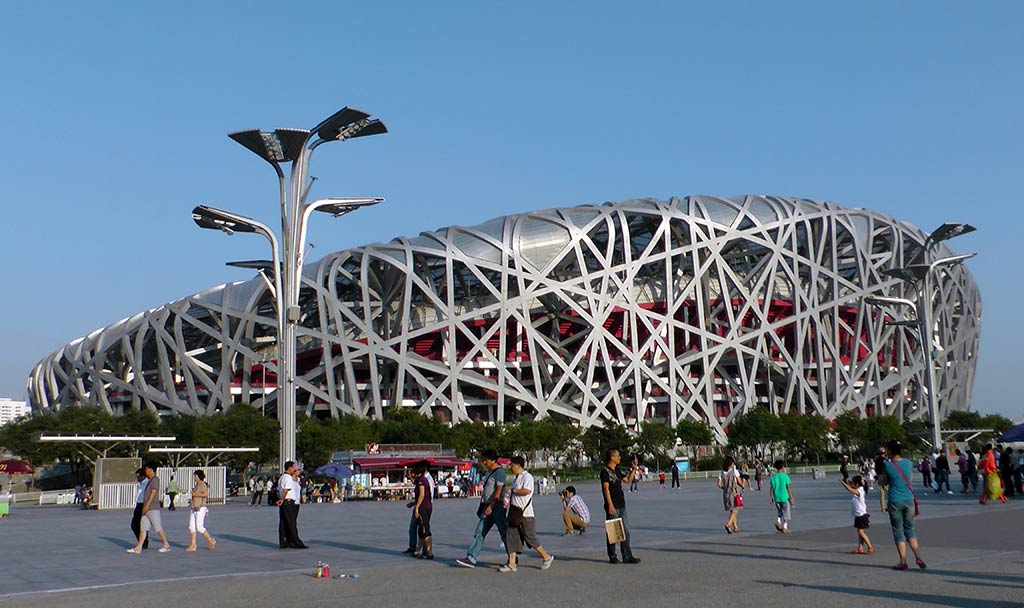
Part of the problems reading the new architecture rises in the nature of representation itself. Much of the work – including the Blur Building – will not conform to conventional drawing. When buildings have no start, no end, follow no geometry, orthogonal axes or linear limits, they even defeat the line representation of rendering. No plan, section or elevation allows you to construct the structure in the third dimension. Spray paint, charcoal or the ink smudge come close to the statement. Sometimes, the computer mesh frame can capture something of its illusive angularities or complexities, concave and convex.
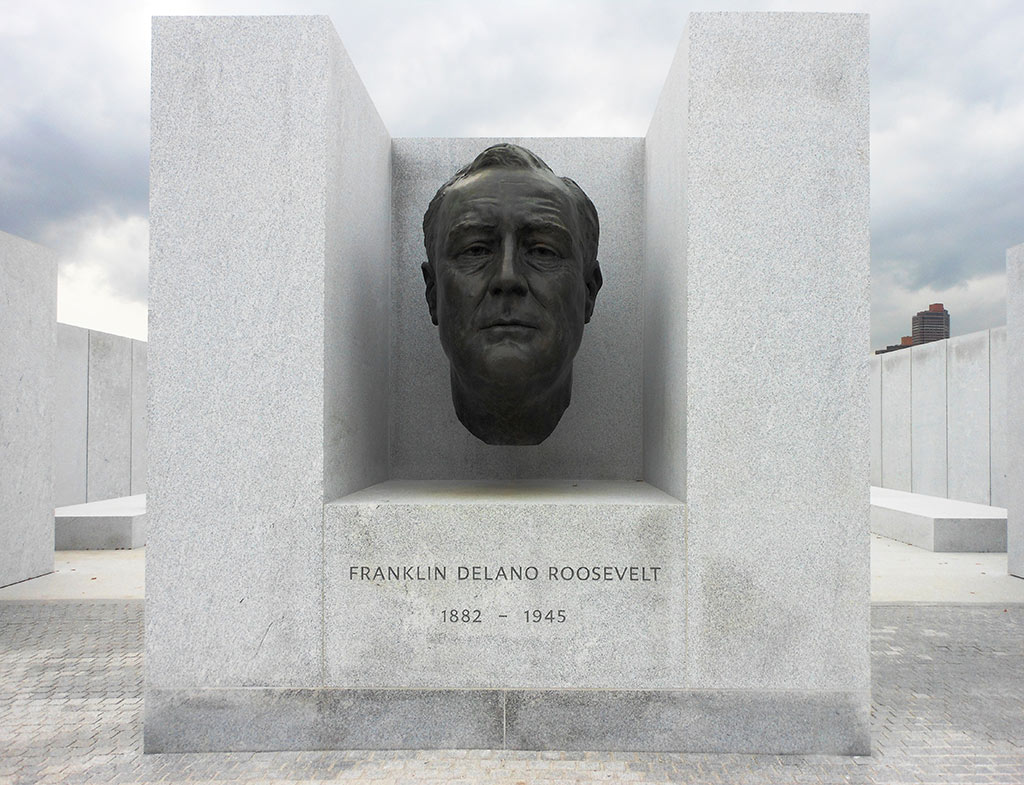
The seemingly self-conscious process of destruction has taken architecture from an object carefully constructed, piece by piece in space, occupying ground and air rights, to complete oblivion, and a deliberate denial of its physicality. Practising in the eighties, SITE, or Sculpture in the Environment, began by destroying the very buildings they first carefully constructed, a dual process that constructed and deconstructed. The denial of architecture was perceived in its decay, and designed in the building itself. In the Best Product, showroom walls developed cracks, whole brick parapets crashed in confounding piles, foliage ripped apart facades – the seemingly innocuous archaeological process of decay that normally stretched to centuries was compressed into a foreshortened present that left the visitor suspended in a time-warp transformation. The architect’s critical grasp of the present, past and future expressed in a single moment was the primary call of the architecture. For the most part, their current work also reinforces the quest for historic redundancy and an expression that overcomes the right of the building for a patient expression of its materiality. If there is a restatement of the relationship between building and user, the parallel is repeated in art and literature, where the narrative reaches no conclusion and, most times, resolves the story line in a subversion of space and time, and a complete absence of local situations. Without culture as a hinge, architecture loses its aspect of the ‘eternal’ where its archaeology becomes a link to surrounding buildings and landscape. No such conditions are imposed on architecture anymore. The anonymous and the universal are now one and the same thing.
John Ruskin once said that the greatest glory of a building is its age, its stained walls and decay attest to that history – walls that have stood witness to the passing waves of humanity. He hadn’t seen the Blur Building.
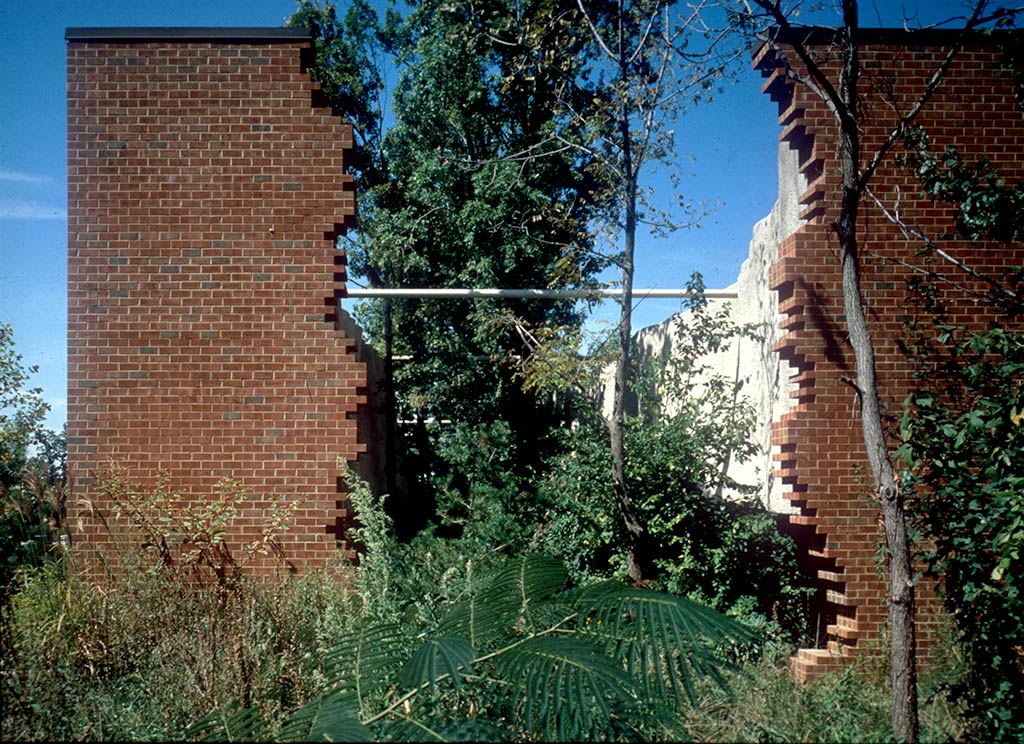
Image Courtesy of James Wines and SITE
